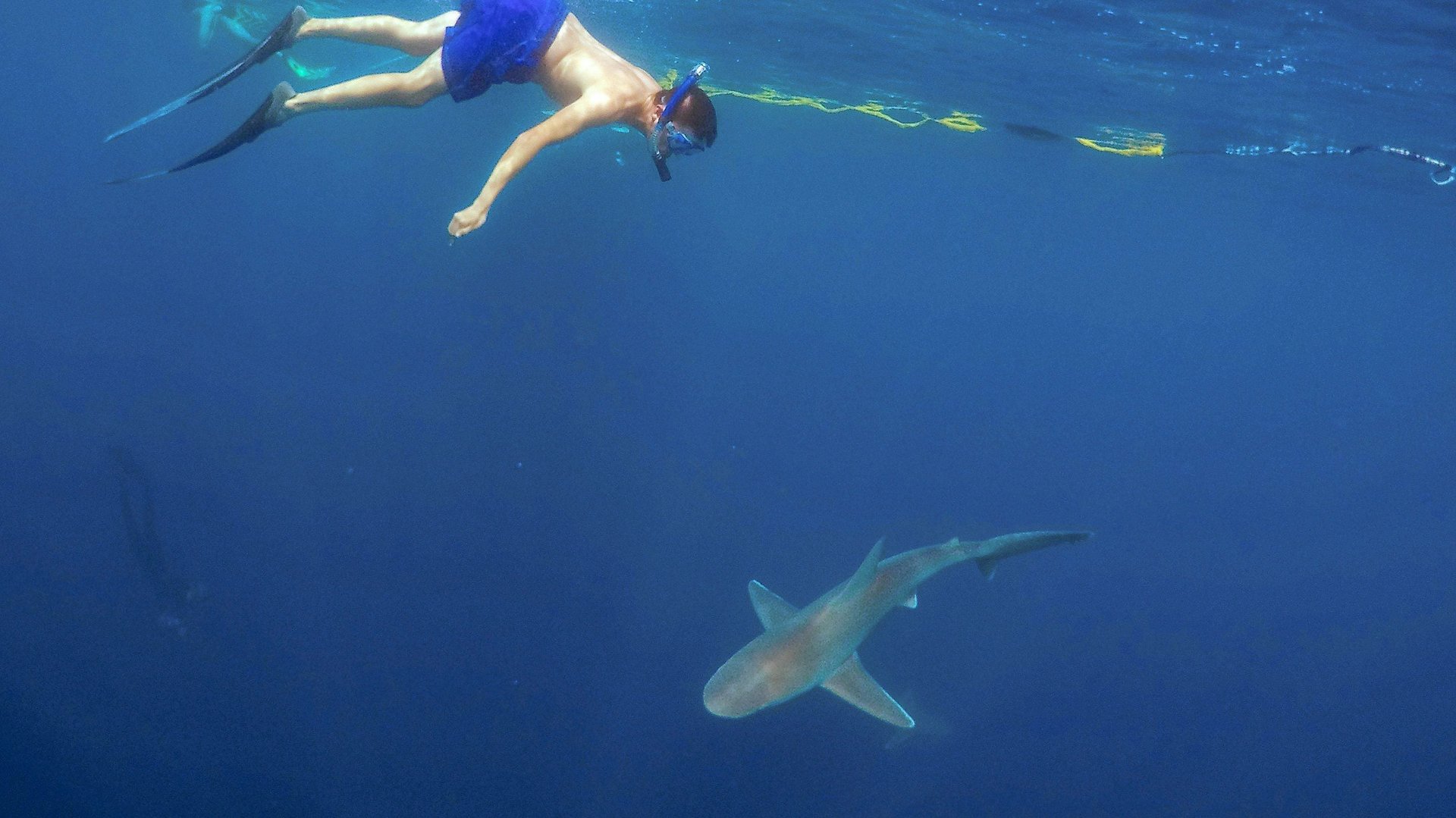The US Navy developed a “shark repellant” during WWII
It’s human nature to fear the unknown, and at the start of World War II, a lot was up in the air.


It’s human nature to fear the unknown, and at the start of World War II, a lot was up in the air.
The US military was flying planes over the warm waters of the Pacific for the first time. And in addition to experiencing the nerves that come with fighting in the biggest war to date, pilots were terrified of the waters below them. The endless, opaque velvet waters concealed unspeakably dangerous animals—or at least, that was the rumor.
In the spirit of the anxiety of the time, members of the Navy began to gossip, Mary Roach writes in Grunt: The Curious Science of Humans at War. Sailors and pilots swapped stories of sharks in dark ocean waters devouring soldiers who’d been forced to abandon their ships or planes. In one of them, an Ecuadorian Navy pilot whose plane crashed at sea was subsequently stalked by sharks as he swam to shore, dragging the body of his drowned colonel with him. Sharks, portrayed here as blood-thirsty scavengers all-too-eager to rip off the corpse’s limbs as a free meal, were quickly vilified as sea monsters.
This particular tale made its way to Henry Field, the chief anthropologist to US president Franklin Roosevelt (a position that does not appear to exist today) and an employee of the Office of Strategic Services (OSS), the Central Intelligence Agency’s predecessor. Field passed it on to the president, in an official report describing an urgent need for shark repellant. Roosevelt obliged, and instructed Field to get cracking.
In reality, the threat of sharks was mostly assumed. Despite plenty of rumors like the one Field wrote about in his report, there had been no documented attacks by sharks on anyone in the US Navy at the time.
The Navy decided to fund some of the work anyway, deciding it would be easier to quiet the minds of nervous soldiers than to convince them sharks weren’t a problem. “The main goal of the shark repellant was really what they called a ‘pink pill,'” Roach told Business Insider. “It was just to make them feel better.”
Nonetheless, Field took on the task with gusto, teaming up with Harold Coolidge, a primatologist (read: studies land mammals, including us) who was also with the OSS; W. Douglas Burden, an expert on Komodo dragons; and Stewart Springer, a college dropout-turned fisherman-turned chemical technician. The motley crew was the best team they could find: No one really knew much about sharks at the time.
With the help of a few hired chemical engineers—including Julia Child before the onset of her culinary career—Field’s team tested about 100 potentially repellant substances on spiny dogfish, a tiny shark that has never been implicated in a shark attack. The team put aspiring repellants, which ranged from pine oils to nicotine, in the sharks’ tank, to see if they would swim away. The dogfish were nonplussed, except when confronted with decaying shark meat—that appeared to gross them out.
The OSS settled on a mixture of copper sulfate and maleic acid, which had also been somewhat effective during testing, and some sort of extract from decomposing sharks. In addition to having a hard time finding actual ocean sharks to test it on, the team realized they had a problem: The amount of chemicals needed to actually repel sharks would be too cumbersome for soldiers to carry around.
According to Roach, the Navy became annoyed with the OSS’s lack of progress and took over the project themselves. They ended up borrowing a trick from squid and octopuses by creating an ink bomb of sorts. The “ink” contained a bit of copper acetate, which would presumably blind swarming sharks while they were trying to feed. Eventually this ink would dissolve in the vast ocean waters, leaving swimmers vulnerable again, but nevertheless soldiers from 1945 through the Vietnam War were issued so-called SHARK CHASER (even Batman had some).
Eventually, the military recognized that, among the dangers of combat, sharks rank extremely low. While many sharks will take a bite out of a corpse (it’s a free meal!), living humans are not a particularly satisfying shark food compared to a nice fat seal or fish.
The real problems for sailors or pilots who may find themselves in ocean waters? Staying above water, finding food and fresh water, and staying warm. But drowning, starvation, and hypothermia are invisible, as was the anxiety of war. Arguably, it was easier to scapegoat sharks as sea monsters because they were a concrete worry.